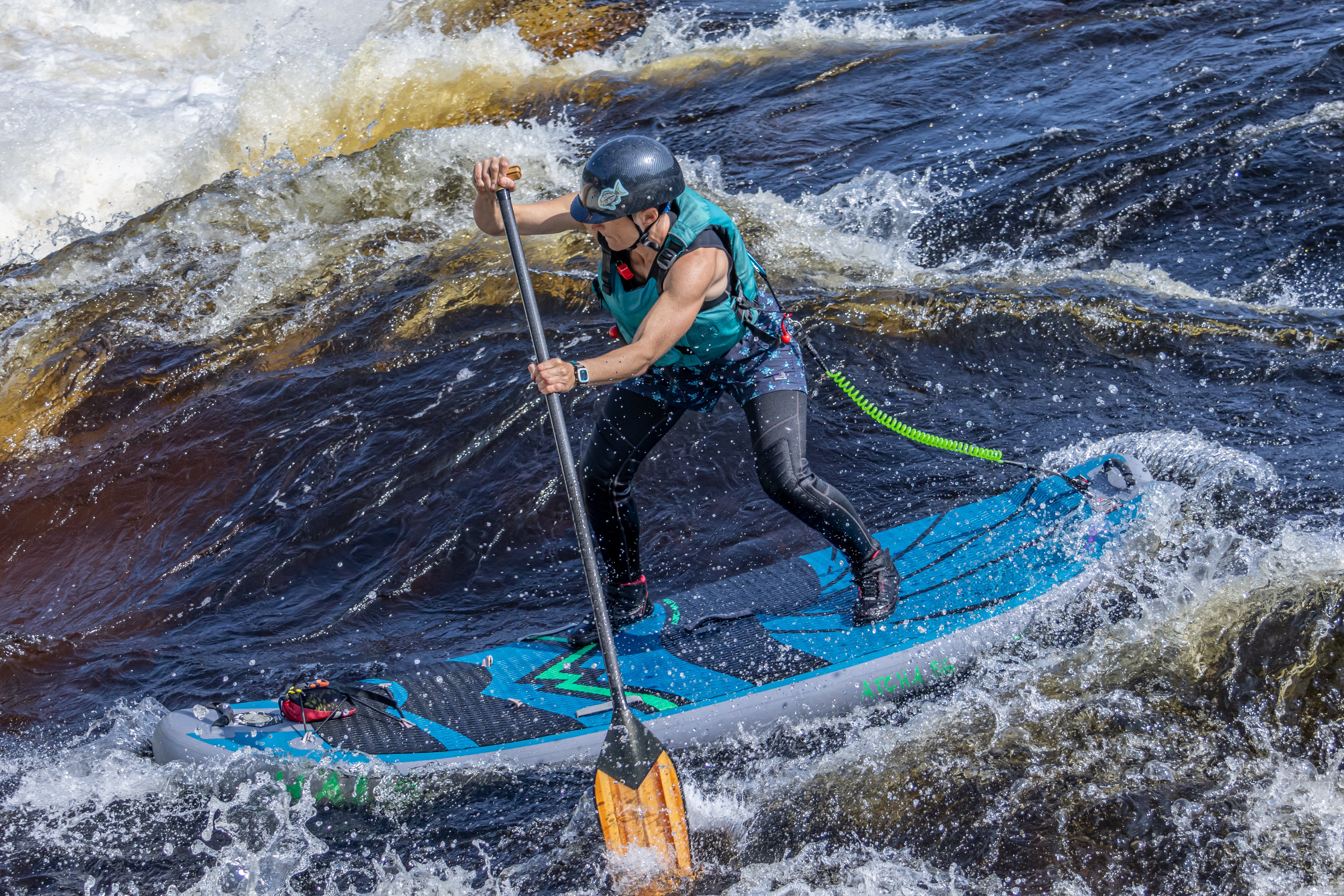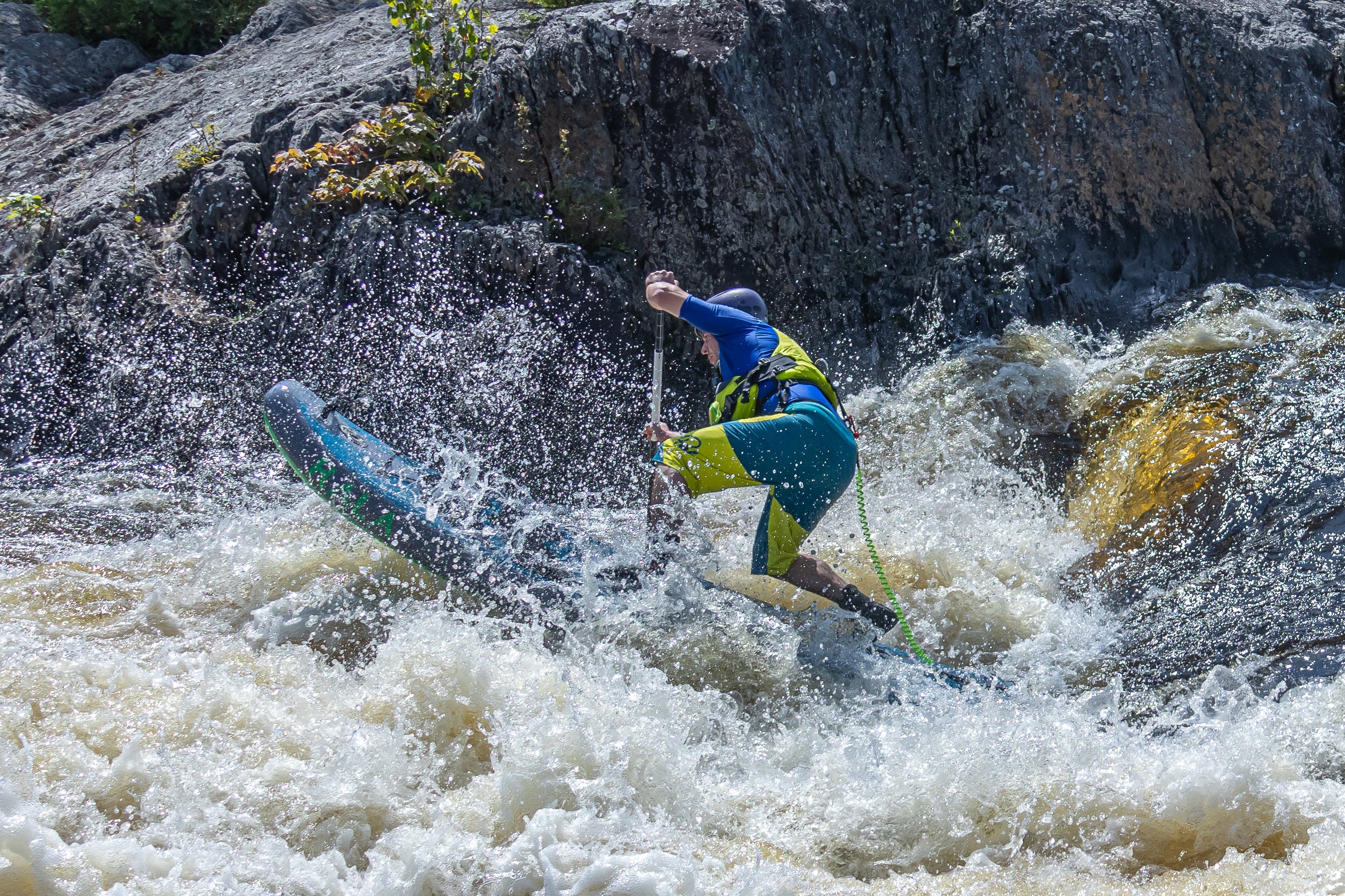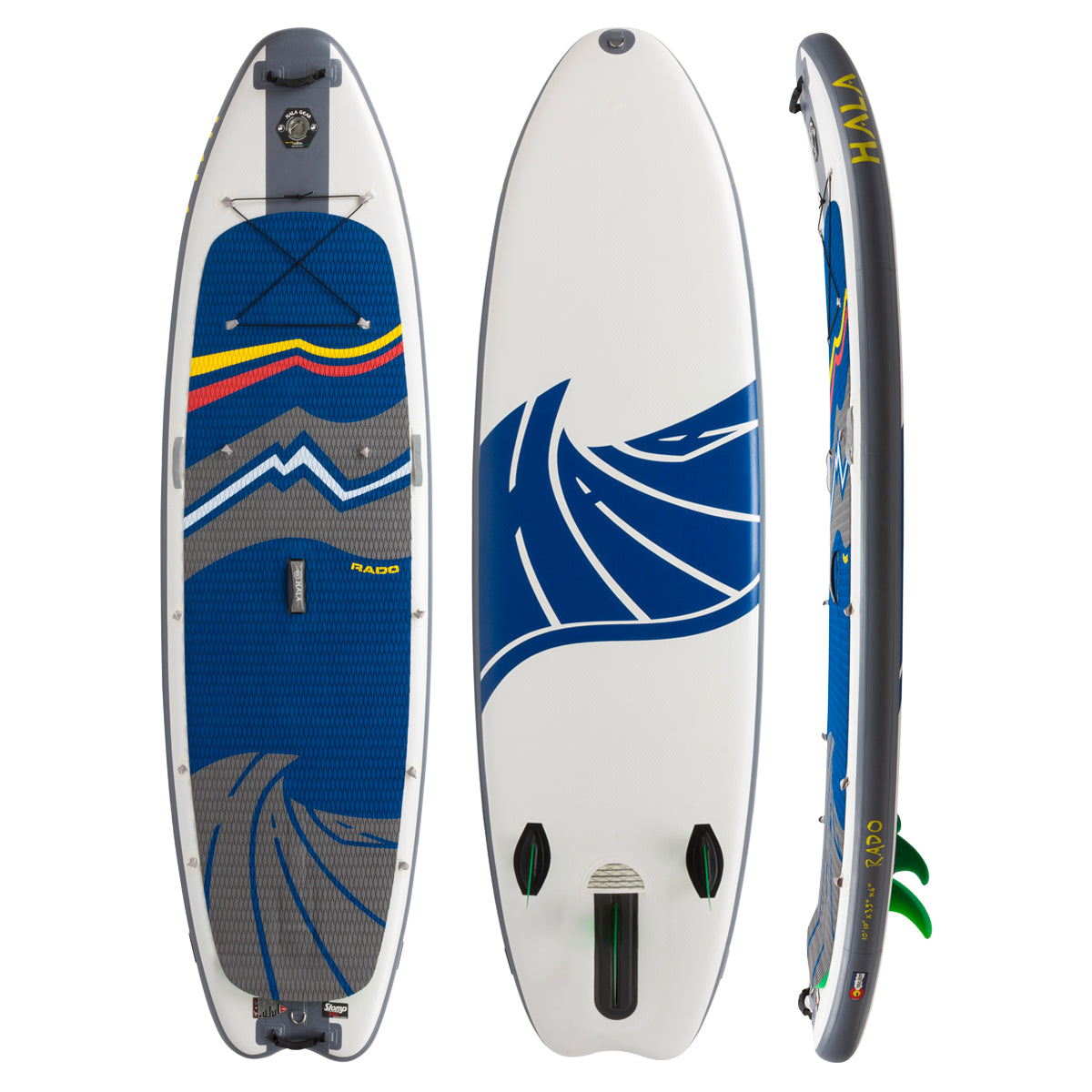
How to get into Whitewater SUP
Taking the first steps into whitewater SUP could be one of the most amazing things you will ever do - it can also be pretty scary. You might have many questions, including where do I start, what kit do I need, how do I get help, and what instruction do I really need?
Don’t worry. We will examine all the above and more as we break down how to get into whitewater SUP.
Step One: Master Flat Water Skills

Before jumping into moving water, it is essential to have a few flatwater skills mastered. Lakes, reservoirs, and lazy rivers are perfect places to practice the following skills:
- Stance and Balance – Before progressing to moving water, make sure you have a solid stance, an ability to move around the board and adjust, and confident balance.
- Paddling Technique—Practice forward paddling and turning techniques to drive the board. You will need power and control to get into moving water.
- How to fall – Falling is a part of Whitewater SUP, and it’s important to do it correctly. A “good fall” involves falling flat on the water, like a belly flop, to avoid going too deep. Likewise, you want to make sure you practice holding onto your paddle.
- Height management: Get comfortable dropping down to one or both knees. For more on height management, check out this blog.
Step Two: Find a Community or Mentor
The safest way to begin your whitewater journey is with other experienced paddlers and mentors. The good news is it’s easy to find a group to tag along with if you know where to look. Check out:
- Friends who already partake in whitewater SUP.
- Local SUP Clubs (Facebook is great for this.)
- River Courses – Check with Google for your country’s for their national governing body. For example, the ASI or ACA.

Step Three: Get the Right Kit
River SUP and flat water SUP require different gear. Here’s what you need for river running.
- A SUP – No-brainer. If you are a new paddle boarder in whitewater, it is worth looking for something highly stable and preferably with a retractable fin to minimize issues with shallower sections. For example, the Hala Gear Rado is the perfect whitewater starter board. The Rado even comes with a paddle!
- PFD—A PFD or personal flotation device is a MUST. Do not attempt to run whitewater without a whitewater-approved Type III or Type V PFD. It doesn’t need to be super expensive, but it needs to help keep you afloat! Check out the YTV from Astral, which is a good starter vest.
- Helmet – You should always wear a helmet on the river! When Whitewater SUPers fall, we fall from height and a helmet will protect your noggin!
- Footwear – There are lots of options out there. We’ve seen everything on the river, from old sneakers to Crocs and flip-flops. In general, you want something that will offer good grip and support, but avoid big, clunky boots.
- Wetsuit/drysuit – What you wear depends on the time of year and where you are paddling - if you are in a cold country, then it’s probably a good idea to invest in a 5mm wetsuit - if not, and you only paddle in summer, then shorts and a rash vest might be fine.
- A leash—Leashes and rivers are a controversial topic. However, we recommend beginners use a leash. For whitewater and moving waters, you MUST use a quick-release system, and you need to be very familiar with the release system you have!

Getting instruction on how to set up and use/release a quick-release system properly is a must for all SUP boarders. These systems are not without their risks, but they do, of course, keep you close to your SUP, allowing for quicker recovery and minimal time in the water if you fall off.
What About Whitewater SUP Instruction?
We cannot stress enough the benefits of getting instruction from a qualified instructor. An instructor observes and analyzes your SUP ability, which will help you progress in the right direction and at the right pace.
Must-have Skills
Here are some must-have skills that you can learn with a qualified instructor:
- The importance of leashes and how to return to your sup in moving water. These things can’t be underestimated.
- Instruction on general whitewater safety and rescue so you can also help others on the water.
- How to cross eddy lines and drive the SUP in moving water.
- Bracing and utilizing your paddle for balance.
Ideally, you will work on the above skills with an instructor. Or, if you’re lucky, you might have skilled friends and local SUP clubs to help you out.
 See You On the River!
See You On the River!
We’re stoked you’re interested in Whitewater SUP and hope we answered some of your questions. If you’re feeling nervous about finding a group, we can assure you the Whitewater SUP boarders community is one of the friendliest out there!
We all want to help each other, so feel free to reach out and ask people you see on the river or social media. Most of us are lovely people who want the best for the sport. And who knows, one day, we might even see you on the river pushing the very realms of whitewater SUP!
__________________________________________________________________________
James Miller hails from the Highlands of Scotland, where he has been an outdoor instructor and mentor for over a decade. The only thing that makes him happier than dropping falls on his SUP is helping others excel in the great outdoors. When he's not scouting and running new rivers, James helps instruct instructors in various outdoor disciplines, including mountaineering, climbing, canoeing, kayaking, and white water rafting.



Leave a comment
This site is protected by hCaptcha and the hCaptcha Privacy Policy and Terms of Service apply.